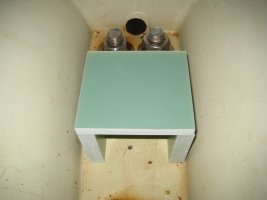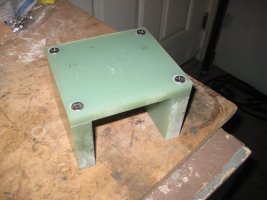One winter project is to put backing plates where they seem to be needed. There are very few backing plates on my e27. I've read a lot about the materials and creating a uniform bed so the backing plate does its job optimally. Before I go into this winter project can I have some insights into these questions:
Thanks!
Jay
- while maybe not optimal compared to stainless, can I use G10 or aluminum for most plates? I'd like to do the drilling and cutting myself.
- are there some backing plates that should definitely only be SS?
- And where I create smooth uniform surfaces for the plates such as below my bow cleats, I have read about supporting the plate against the epoxy with wax paper etc so that it can be removed suggesting that the plates should not be bonded but held in place mechanically. Is that correct?
Thanks!
Jay


